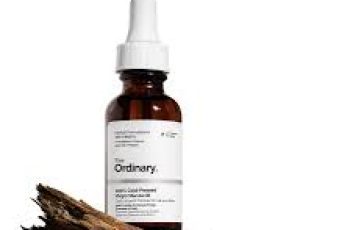
Can Alpha Lipoic Acid be used with Niacinamide?
When it comes to skin care, we all know that using antioxidant-rich formulas and ingredients is the best way to ensure that our skin stays at its healthiest. Luckily, there are some ingredients that can deliver more impressive results than others. Alpha-lipoic acid is one of the most commonly used ingredients to help the skin and body reap the benefits. Alpha-lipoic acid has been shown to have antioxidant power that is over 40,000% stronger than vitamins C and E combined.
So is this powerful ingredient what you’re missing from your skin care routine? Can you use alpha lipoic acid with niacinamide? Let’s dive in and learn how to use these ingredients effectively.
What is Niacinamide?
Niacinamide is a form of vitamin B3 that is commonly found in skin care formulas like serums. It is known for its ability to reduce signs of aging like fine lines and wrinkles, as well as its beneficial hydrating properties. When applied topically, you’ll see a noticeable difference in overall skin hydration. It does this through its hydrating properties that I mentioned earlier. This is achieved by the moisture around the face being absorbed into the skin and locked there. This ensures that the skin’s natural protective barrier is strengthened and protected against free radical damage caused by UV rays, pollution, central heating, harsh climates and other environmental aggressors.
You’ll also find that Niacinamide has anti-inflammatory properties that help soothe irritated skin, making it an ideal ingredient to add to your daily routine if you have a dry or sensitive skin type. Not only do dry skin types benefit from Niacinamide, but oily and impure skin types also benefit from this clever powerhouse. Another unique property of Niacinamide is its ability to regulate oil production, preventing overproduction of sebum (the natural oil in the skin) which can lead to acne and breakouts.
If you’d like to learn more about Niacinamide and its effects on the skin, read our dedicated blog post.
What is Alpha Lipoic Acid?
Alpha-lipoic acid is an enzyme found naturally in the body and is used in a number of skin care products. It is known for its high levels of antioxidants, with a higher free radical-fighting capacity than vitamins C and E, two standalone ingredients that are often considered unrivalled when it comes to antioxidants.
Alpha-lipoic acid can benefit you by taking it as a dietary supplement in capsule form or by consuming it in large quantities in foods such as red meat, spinach, broccoli, tomatoes, and Brussels sprouts. By taking it as a dietary supplement, you can protect your body from all the damage caused by free radicals from the inside. Of course, you can also apply it topically to your skin, but there is a downside to this powerful powerhouse: increased sensitivity to the sun can lead to sunburn and long-term sun damage. Be sure to wear SPF sunscreen every day to fully protect your skin and protect it from the sun.
What Not to Mix with Niacinamide?
Vitamin C is the main ingredient that should not be mixed with Niacinamide. Although both contain a lot of antioxidants, they do not work well together. This is because each ingredient has similar effects on the skin. When mixed, they begin to cancel each other out, rendering each ingredient completely useless.
However, this does not mean that you should not use Niacinamide and Vitamin C in your daily routine. Many people find that changing the time of day when they use the ingredients ensures that the skin benefits without having to worry about adverse side effects such as dryness, itching, or redness. Serums enriched with Vitamin C tend to leave skin glowing and full of vitality. I personally think this is the best ingredient to add to your morning routine to fight free radicals throughout the day and give your complexion a healthy, radiant glow. Then, incorporate Niacinamide into your evening skincare routine to moisturize and repair the skin after a day of free radical UV exposure.
What can alpha lipoic acid be mixed with?
There are very few substances that can be mixed with alpha lipoic acid. In fact, it is often included in some product formulas to enhance antioxidant protection. However, little is known about the benefits of ALA for the skin. This is something to consider if you want to introduce it into your daily routine. To be safe, I recommend consulting a doctor, dermatologist, or medical professional before applying to your skin. If you want to be extra cautious, you can also do a patch test and take a 10p-sized amount and apply it to the inside of your forearm. Leave it on for 24 hours. If there are no signs of irritation, then your skin is happy with the use of ALA.
Can Niacinamide be used daily?
Yes, you can definitely use Niacinamide daily, even twice a day. Many people find it to be a very useful ingredient to apply at night before applying powerful skin ingredients like retinol due to its hydrating properties. Not only does niacinamide counteract the potential drying caused by retinol and other acids like salicylic acid, it also helps other active ingredients absorb into the skin quickly and effectively.
Can I mix niacinamide with hyaluronic acid?
Of course, the combination of niacinamide and hyaluronic acid provides the ultimate hydration for the skin. Ideally, I recommend applying hyaluronic acid first, as this attracts moisture and locks it in place. Applying niacinamide afterward allows this powerhouse to focus on regulating oil production and minimizing the appearance of pores.
Below is more information on using alpha-lipoic acid with niacinamide. Remember, if you have any questions, feel free to follow us on Instagram.


